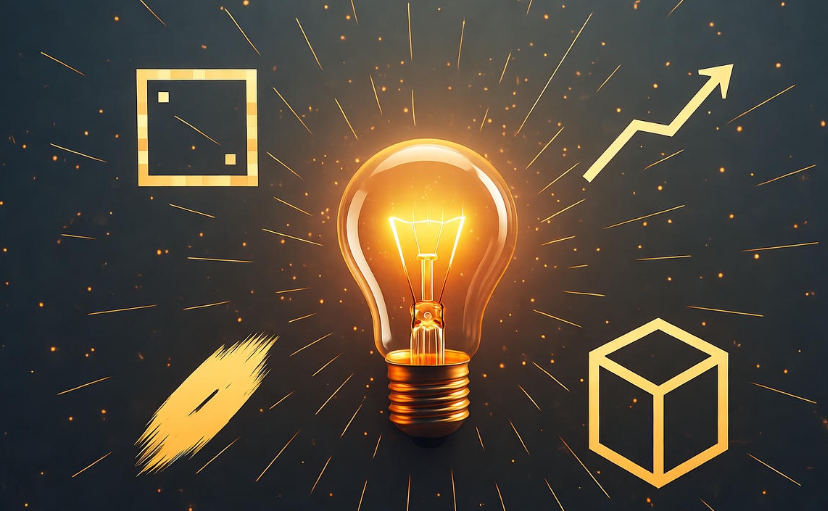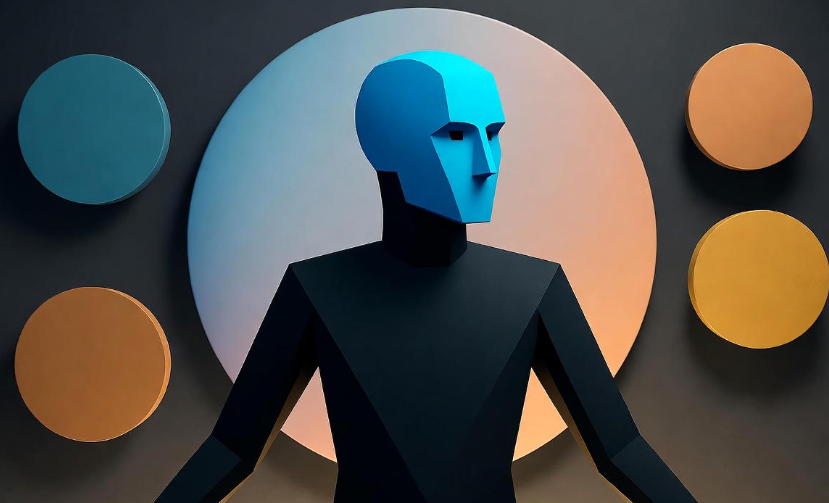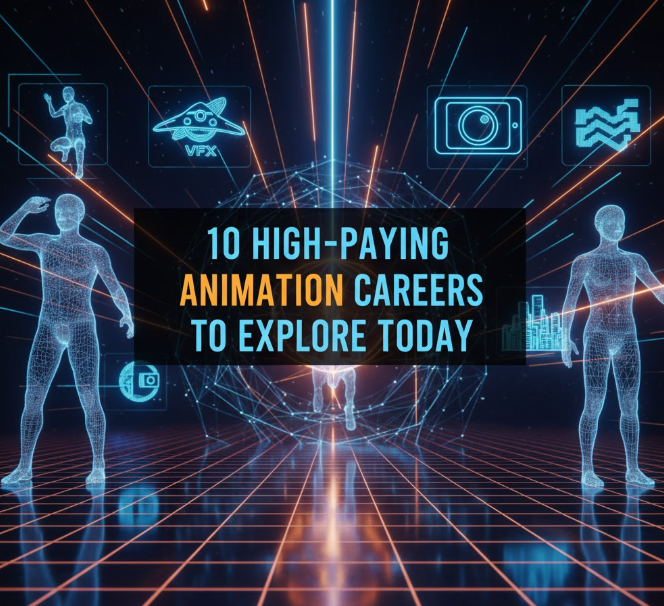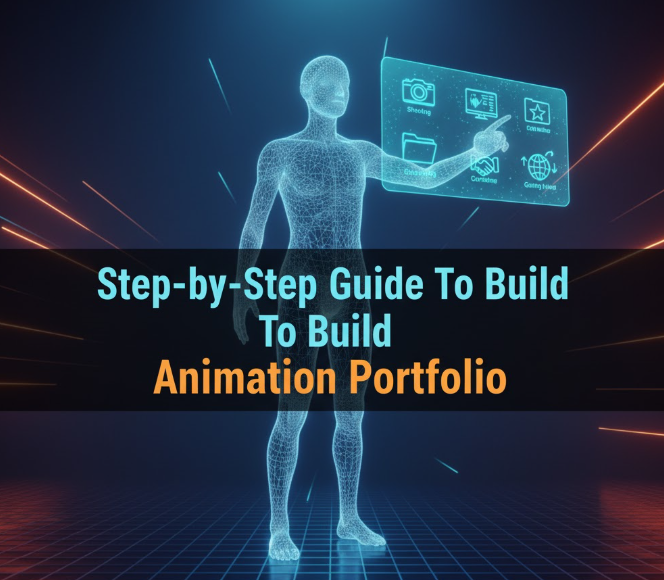Animation has grown from a simple form of storytelling into a major creative force shaping the digital world. Everywhere you look — movies, advertisements, games, social media, websites — animation brings life, motion, and emotion to visuals. But beyond just fun cartoons or effects, animation is becoming the core language of digital art.
Let’s talk honestly — the digital world is changing fast. People no longer want to just see something; they want to feel it. And that’s exactly what animation does — it turns static ideas into experiences. So, let’s explore why animation is taking over and why it’s the bright, creative future of digital art.
Animation makes visuals come alive
Think of the last time you watched a motion graphic or even a simple animated logo. It immediately caught your eye, didn’t it? That’s because our brains are naturally drawn to movement. Animation turns still images into living expressions — characters smile, text dances, and objects move with purpose.
In digital art, that life-like motion changes everything. A static poster can tell you what something is. But an animated one? It can show you how it feels. And that emotional connection — that spark — is what modern audiences crave.
Short attention spans need moving art
Let’s be honest: in today’s world, people scroll fast. You’ve got about 3 seconds to grab attention — and animation does that better than anything. Whether it’s a looping GIF, a short animated ad, or a quick story reel, motion instantly pulls people in.
Here’s a simple comparison
| Type of Visual | Average Attention Time | Engagement Level |
|---|---|---|
| Static Image ️ | 1.5 seconds | Low |
| Short Animation | 3–5 seconds | Medium |
| Interactive Animation ️ | 8–12 seconds | High |
So, if you’re a digital artist trying to make your work stand out online, animation isn’t just an option — it’s a survival tool.
Animation is storytelling in motion
Every piece of art tells a story. But animation tells it dynamically. It allows emotions, transitions, and timing to work together like a song. Even a short animation clip can express sadness, excitement, or wonder — all within seconds.
Think about Pixar, Disney, or even small creators on YouTube — they don’t just draw; they move emotions. Animation gives stories rhythm and depth that static visuals simply can’t match.
Technology is making animation easier than ever
There was a time when animation took months of hard labor. Today, tools like Blender, Procreate, After Effects, and even mobile apps allow artists to animate with just a few clicks.
This democratization of tools has opened a new era — anyone with creativity can bring their ideas to life. From 2D frame-by-frame animation to 3D motion graphics, software has made it accessible for both professionals and hobbyists.
| Tool | Type | Suitable For |
|---|---|---|
| Procreate | 2D Animation | Beginners & Illustrators |
| Blender | 3D Animation | Professionals & Learners |
| After Effects | Motion Graphics | Designers & Video Editors |
| Toon Boom Harmony | 2D/TV Animation | Studios & Animators |
So, the future isn’t just about animation being more powerful — it’s about it being more possible.
Animation connects better with audiences ❤️
People don’t just want to buy products or consume information anymore; they want to connect. Animated visuals create that bond by mixing motion, color, and sound in a way that feels natural and fun.
For example:
-
A fitness brand using an animated mascot builds a friendly identity.
-
A learning platform using explainer animations helps people understand better.
-
A website using interactive motion guides keeps users engaged longer.
In short, animation doesn’t just talk — it communicates.
It’s redefining digital careers
Animation is no longer limited to cartoons or film studios. It’s now used in marketing, UX/UI design, architecture, gaming, education, and even virtual reality.
Digital artists who can animate are in high demand — and that demand keeps growing every year.
| Industry | Use of Animation | Future Growth |
|---|---|---|
| Marketing | Ads, product videos | Rapid |
| Gaming | Characters, environments | Explosive |
| Education | Explainer videos | High |
| Social Media | Reels, motion posts | Massive |
Simply put: learning animation today means future-proofing your creative career.
Animation meets Artificial Intelligence
Here’s something even more exciting — AI is joining the animation game. New AI tools can generate character movements, automate lip sync, or even create entire animated scenes from text.
But that doesn’t mean artists will be replaced. In fact, it means artists can focus more on creativity and less on repetitive work. AI + Animation = faster workflows and more time for storytelling.
Imagine describing a scene in words, and AI animates it instantly — that’s the direction we’re heading toward.
Animation enhances brand identity
Big brands use animation not just for fun but for branding consistency. Animated logos, transitions, and characters make brands memorable. For instance, Netflix’s “N” intro animation is only a few seconds long but instantly recognizable worldwide.
A static logo is a picture. An animated logo? That’s a signature move.
Brands know that animated design helps customers remember them emotionally, not just visually.
It’s the heart of the metaverse and virtual worlds ️
As digital spaces like the metaverse and VR expand, animation becomes the language of these worlds. Every avatar, every movement, every environment — all are made through animation.
It’s no exaggeration to say that the future of virtual interaction depends on animation. Artists who master it will literally shape how people live and experience the internet.
Animation breaks barriers of culture and language
Animation speaks a universal language. You don’t need subtitles to feel the emotion of a smiling character or a flying bird. This is why animated art spreads so fast globally — it connects beyond words.
In today’s connected world, that ability to cross cultures is powerful. Animation can spread ideas, emotions, and messages across borders faster than text or photos ever could.

Animation is sustainable digital creativity
Compared to traditional film or live-action production, animation is more eco-friendly. It doesn’t require big sets, travel, or physical materials. Everything happens digitally — saving time, cost, and the environment.
As more industries shift toward sustainable solutions, animation stands out as a green creative medium that delivers big impact with a smaller footprint.
Animation and education — a perfect combo
Teachers and online educators are using animation to simplify complex concepts. Animated explainers help students visualize tough subjects, making learning more interactive and enjoyable.
For example:
-
Science classes use animated experiments.
-
History lessons show events through timelines and movement.
-
Language apps animate pronunciation examples.
The future classroom is not just digital — it’s animated.
The emotional power of motion
When things move, they feel real. That’s psychology. Animation taps into that natural response. The bounce of a ball, the wink of an eye, or the flicker of light — all these details build emotional depth.
It’s why animated films make us cry, laugh, or dream. Movement is emotion — and emotion is art.
The blend of traditional art and animation ️️
What’s amazing is that animation doesn’t replace traditional art — it enhances it. Many animators start with sketching, painting, or digital drawing. Animation simply takes those artworks one step further by adding time and motion.
So, if you love drawing or painting, animation is just the next natural step — a way to let your art breathe.
Why the future is animated
When you look at everything — technology, communication, creativity, and human emotion — they all point in one direction: motion.
Animation has become the bridge between imagination and reality. Whether in 2D, 3D, VR, or AR, animation makes ideas move, connect, and live.
It’s not just the future of digital art — it’s the future of expression itself.
Final Thoughts
Animation is not just about pixels and software. It’s about emotion, story, and connection. The digital age needs artists who can create not just beauty but motion that speaks.
Whether you’re a designer, filmmaker, marketer, or hobbyist — learning animation today means shaping tomorrow’s visual world. The canvas of the future isn’t static; it moves, it feels, it lives.
So, if you ever thought animation was “just cartoons,” think again — it’s the heartbeat of digital creativity.
FAQs
Q1. Is animation difficult to learn for beginners?
Not at all! With easy tools like Procreate or Canva, anyone can start learning basic animation. It takes practice, but once you get used to it, it becomes fun and natural.
Q2. Can animation be a full-time career?
Absolutely! Animators are in high demand across marketing, gaming, education, and entertainment industries. Freelance and remote options are also growing fast.
Q3. Do I need expensive software to animate?
No. There are many free tools like Blender, Synfig, and Krita that let you start animating without paying a penny.
Q4. Why do people say animation is the future?
Because animation combines storytelling, emotion, and technology — it’s the perfect fit for how the modern world communicates visually.
Q5. Is animation only for kids’ content?
Not at all. Animation is used in advertising, business presentations, UX design, and even serious documentaries. It’s for everyone.




